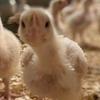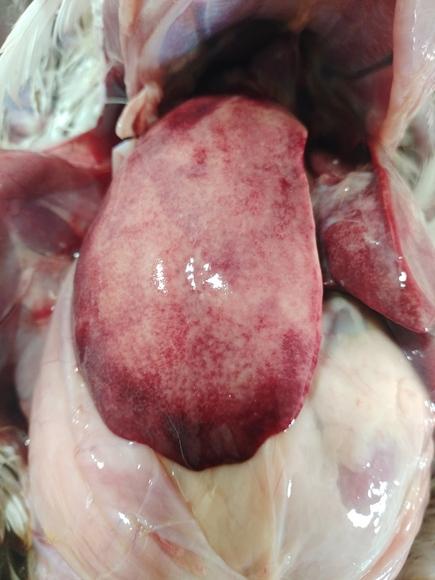Explore all the information on
Metabolic and nutritional diseases in poultry
Deficiencies or disturbances of nutrition cause a variety of diseases and can arise in different ways. The amount of a particular nutrient in the diet may be insufficient to meet the requirements, the diet may contain substances that inactivate the nutrient or inhibit its absorption/utilisation, or metabolism may be upset by the interaction of dietary and environmental factors. Peroxidation of lipids or oxygen free radical generation in general is a physiological process important for cell metabolism, division and differentiation and also for the biosynthesis of hormones and prostaglandins. Several common health conditions can affect poultry, including visceral gout, fatty liver syndrome, cloacal prolapse, osteomalacia, vitamin E deficiency, and ascites syndrome. Understanding these conditions and implementing appropriate management strategies can help prevent and treat them effectively.
Introduction Dorsal cranial myopathy (DCM) is characterized by muscular changes, including degenerative and multiphasic lesions that specifically affect the anterior Latissimus dorsi (ALD) muscle in chickens, a superficial, bilateral muscle located in the dorsal region of the wings, which functions as an abductor of the humerus and wings [1–4]. Macroscopically, the ALD muscle region affected by DCM shows yellow, odorless, gelatinous edema under the skin [5,6]. The muscle...
Comments : 0
Recommendations: 0
Adnan Alrubaye (University of Arkansas) explains this disease, also known as BCO Lameness. He comments on different mitigation methods and his research collaboration with companies, in this Engormix interview....
Comments : 9
Recommendations: 0
I. INTRODUCTION Production improvements in commercial meat chickens via genetic selection and improved husbandry have resulted in rapid growing birds. These birds have endemically reduced locomotor ability; a conservative estimate is that 30% of birds in a flock are likely to have poor mobility (Knowles et al, 2008). Leg weakness has a direct impact on production due to lower bird quality, which may result in culls or condemnation of carcasses. While not well understood, early rapid...
Comments : 0
Recommendations: 0
Dr. Houari Mounir, Sales manager at Calier, discusses the importance of liver and kidney health in livestock and how disruptions can impact productivity. He introduces a specialized solution designed to support organ function, improve digestion, and enhance overall animal well-being in intensive production systems....
Comments : 0
Recommendations: 0
Author details: 1 IRTA, Animal Nutrition, Mas Bové, 43120 Constantí, Catalonia, Spain; 2 IRTA, Animal Health, Centre de Recerca en Sanitat Animal (CReSA), Campus de la Universitat Autónoma de Barcelona (UAB), 08193 Bellaterra, Catalonia, Spain; 3 IRTA, Animal Welfare, Finca Camps i Armet, 17121 Monells, Catalonia, Spain; 4 IRTA, Animal Breeding and Genetics, Torre Marimon, 08140 Caldes de Montbui, Catalonia, Spain. 1....
Comments : 0
Recommendations: 2
Ascites (or water belly) is a condition of fast growing broiler chickens in which the excess amount of ascitic fluid accumulated in the abdominal cavity. It has become major concern to the poultry industry around the world. This condition is extremely common in high altitude & more particularly during winter / cooler season.
Ascites is associated with inadequate supply of oxygen, poor ventilation and respiratory disease ...
Comments : 138
Recommendations: 4
Animal welfare audits are performed to evaluate whether a hatchery, farm, or processing plant is meeting the specific animal welfare standards of a certification program. These programs may be internal to a certain company, or they could be a requirement for animal welfare certification. These certification programs...
Comments : 0
Recommendations: 1
Introduction The main issues that burden the broiler industry today might be caused by genetic selection strategies, such as a rapid growth rate, a decreasing slaughter age and facilitating feed efficiency [1]. Indeed, achieving extreme growth potential is a serious biotic stress factor that is accompanied by health problems leading to systemic diseases [2,3]. The path mechanisms of most common infectious diseases, including pneumonia, sepsis and enteritis, are directly linked...
Comments : 1
Recommendations: 0
As the global poultry industry has grown and developed, a great variety of consumer products has emerged, focused on convenience and practicality, that provide opportunities to regain value from carcass parts that may have otherwise gone to waste.
During poultry processing, novel products such as fresh sausages can be an alternative use for compromised meats, such as those affected by deep pectoral myopathy (DPM), a recurrent problem in the pectoral (breast) muscles of birds...
Comments : 0
Recommendations: 0
Woody breast (WB) and white striping (WS) in broiler breast meat are emerging issues in the poultry industry worldwide. These conditions are associated with high breast yielding, heavy broilers, and they have negative quality impacts and major economic implications. Nutritional strategies have been studied by researchers in efforts to reduce the prevalence of WB in broilers, without negative impacts on live performance. Dietary inclusion of guanidinoacetic acid (GAA) has been evaluated as a...
Comments : 0
Recommendations: 0
1 INTRODUCTION Modern broilers grow three to four times as quickly as earlier generations (Browning & Cowieson, 2013). Leg disorders, bone weakness, and broken bones are common problems in broilers that are attributed to poor growth, downgrading at slaughter, and reducing the bird’s routine activities, such as walking, standing, eating, and drinking subsequently causing economic loss at the end (Bell & Weaver, 2002; Manohar et al., 2015; Meseret, 2016;...
Comments : 0
Recommendations: 0
Animal production in the last two decades has seen a significant change in terms of improving the production parameters of Poultry and Livestock through various measures. Among the various tools used in improving the production performance of birds and animals, genetic selection forms the most important tool which has been employed. Various genes corresponding to important production and quality traits have been selected and regulated to have a significant improvement in the way our current...
Comments : 0
Recommendations: 1
Hydroxychloride trace minerals (HTM) have covalent bonds and thus are less reactive both in the feed and in the digestive tract compared to inorganic trace minerals, which contain ionic bonds (ITM) such as sulphate forms. Therefore, HTM may have higher bioavailability than ITM. This study aimed to evaluate the effects of replacing sulphate forms of zinc (ZnSO 4 ), manganese (MnSO4) and copper (CuSO 4 ) (ITM) with HTM sources on tibia bone traits and mineral content in...
Comments : 0
Recommendations: 0


Supplemental dietary methionine sources have a neutral impact on oxidative status in broiler chickens
Suggested link
Alain Riggi, Poultry veterinary at Phileo Lesaffre Animal Care explains the company's new approach on diseases prevention and the new solutions they are offering to the industry, instead of antibiotics....
Comments : 3
Recommendations: 1
...
Comments : 0
Recommendations: 0
.jpg&w=3840&q=75)

Best Practices for Sustainable Waste Management and Environmental Solutions
Suggested link
...
Comments : 0
Recommendations: 0
American and European companies are pledging to move to include slow-growing broiler chickens for production, which means they will use broiler chickens with less efficient growth rates in their production systems. Slow-growing strains show improved welfare outcomes compared to conventional ones. This newsletter...
Comments : 1
Recommendations: 0
Hello everyone, This is a case of broiler chicken. Such type of liver is frequently observed in broiler chicken above 28 days old, once finisher broiler feed started. Such lesion in liver is mostly observed with ascites and nephritis. Liver is frazile and swollen. Mortality is very high in such cases. Can anyone suggest me the tentative diagnosis and line of treatment? Thank you. ...
Comments : 1
Recommendations: 0
1. Introduction Deoxynivalenol (DON) is a secondary toxic metabolite mainly produced by Fusarium species that belongs to the trichothecenes family. DON frequently occurs in cereals, including wheat, maize, barley, rye and oats [1]. A 10-year survey from 2008 to 2017 of the global mycotoxin occurrence in feed revealed that DON was the most prevalent of mycotoxins and was detected in 64% of 74,821 samples collected from 100 countries [2]. Therefore, DON is considered to be...
Comments : 0
Recommendations: 2














.jpg&w=3840&q=75)






.jpg&w=3840&q=75)

















